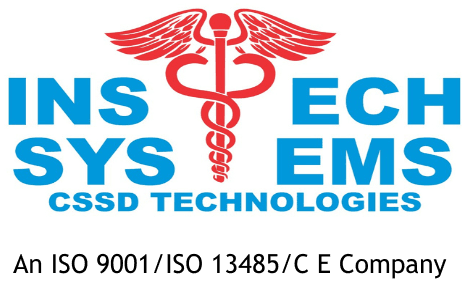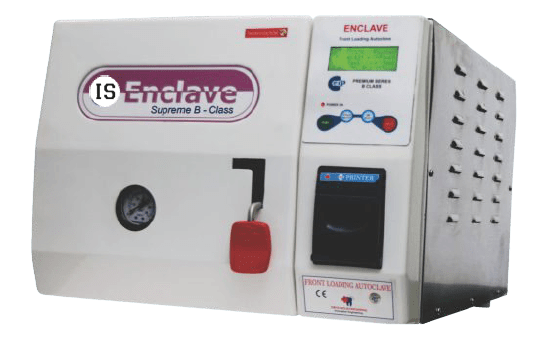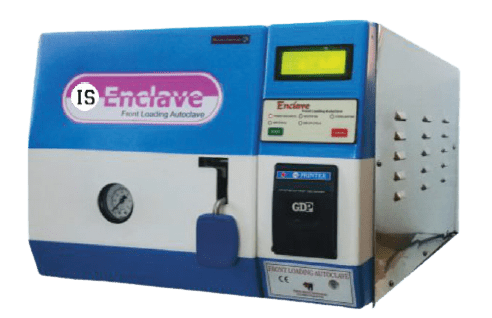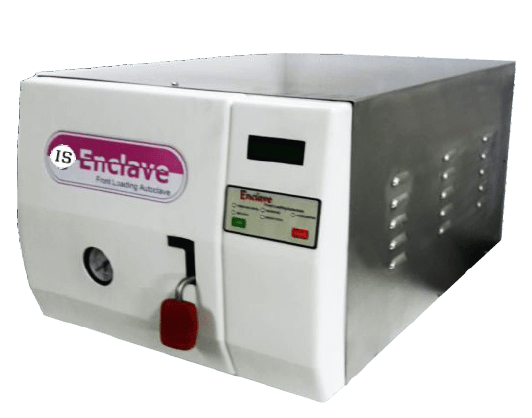Dental Autoclave Manufacturer
Instech Systems is providing you the best range of Laboratory Autoclave, Lab Autoclave, Automatic Dental Autoclave, Vertical Pressure Autoclave with effective & timely delivery. We understand the need of effective sterilization in any dental clinic. So, we are offering you a carefully chosen selection of dental autoclave equipment. Pulse vacuum sterilisation, a crucial component of these autoclaves’ effective sterilisation, is a must.
Lab Autoclave Features:
- Light compact portable easy to use top loading autoclave.
- It consumes less power & reduce electricity bills.
- Extended life Lid Gasket and Heating Element.
- Pressure Gauge, Safety Valve, Double Safety Valve, Steam Release Valve.
- Vacuum Release Valve, Rubber Gasket, Inner Container.
- Tripod Stand.
Dental autoclave are light and portable machine and easy to use. These are perfect for tiny dental units or independent dental wings in medical facilities and nursing homes. These are more affordable and less complicated to use than expensive horizontal autoclaves. The low cost of operating is another advantage of employing a dental autoclave. Autoclave made by Instech Systems use less energy and require less maintenance.
- Comes with a bigger screen. Digital display of temperature and pressure
- Multiple Selectable Programs at 134 C and 121C for Every requirement.
- Total of 13 Error Codes to diagnose any issue during the Cycle
- Comes with a bigger screen (4-Line Display)
- ARM based advanced Micro controller system
- Total of 13 error codes to diagnose errors during the cycle.
- Digital display of Temperature & Pressure.
- Self-Vacuum test, during every cycle.
- Enclave-S Class is fully automatic front loading autoclave. with Thermal Purging, Sterilization & Dry Cycle.
- Electronic Circuit inside the Autoclave with programmable integrated circuit chip
- In Thermal purging cycles it ensurers that
Types of autoclave in dentistry:
In dentistry, there are two main types of autoclaves that are commonly used: gravity displacement autoclaves and dynamic air removal autoclaves.
1. Gravity Displacement Autoclaves: These autoclaves use gravity to push air out of the chamber, making room for steam to enter and sterilize the instruments. They are often smaller and less expensive than dynamic air removal autoclaves, but they may not be as efficient in removing all of the air from the chamber.
2. Dynamic Air Removal Autoclaves: These autoclaves use a powerful vacuum pump to actively remove air from the chamber. This type of autoclave is considered to be more efficient and reliable, as it can ensure that all of the air is removed from the chamber, leading to more thorough sterilization of the instruments. They are typically larger and more expensive than gravity displacement autoclaves, but are often the preferred choice for dental offices and clinics.
Both types of autoclaves use high-temperature steam to sterilize instruments and equipment, ensuring that they are free of harmful microorganisms before being used on patients.
Frequently Asked Questions (FAQs)
A Dental Autoclave is a specialized piece of equipment used in dental practices to sterilize dental instruments and equipment by using high-pressure steam to eliminate harmful microorganisms.
A Dental Autoclave works by exposing dental instruments and equipment to high-temperature steam under pressure. This process effectively kills bacteria, viruses, and other pathogens, ensuring that dental tools are safe for patient use.
Dental Autoclaves are designed to sterilize a wide range of dental instruments, including dental handpieces, probes, mirrors, and other tools, as well as equipment like trays, forceps, and syringes.
- Ensures patient safety by eliminating pathogens
- Meets strict infection control standards
- Simple and effective sterilization process
- Reliability and repeatability
- Essential for dental practice compliance
Dental Autoclaves are used in dental clinics and practices to sterilize instruments and equipment between patient appointments, reducing the risk of cross-contamination.
Dental instruments and equipment are placed in sterilization pouches or containers, and the loaded autoclave is set to the appropriate sterilization cycle, which typically includes temperature and pressure settings. The autoclave operates automatically to complete the sterilization process.
Safety guidelines provided by the manufacturer should be followed, including proper loading of instruments and the use of personal protective equipment. Operators should be cautious when handling hot sterilized items.



